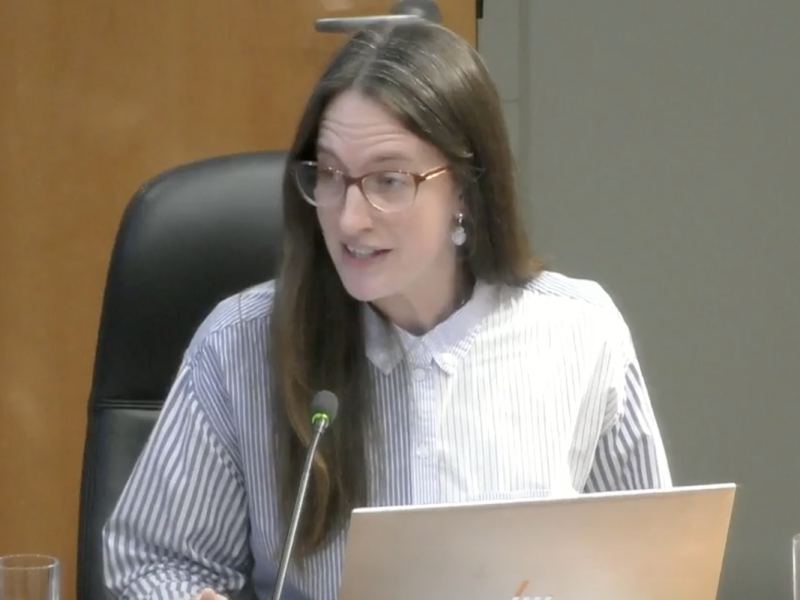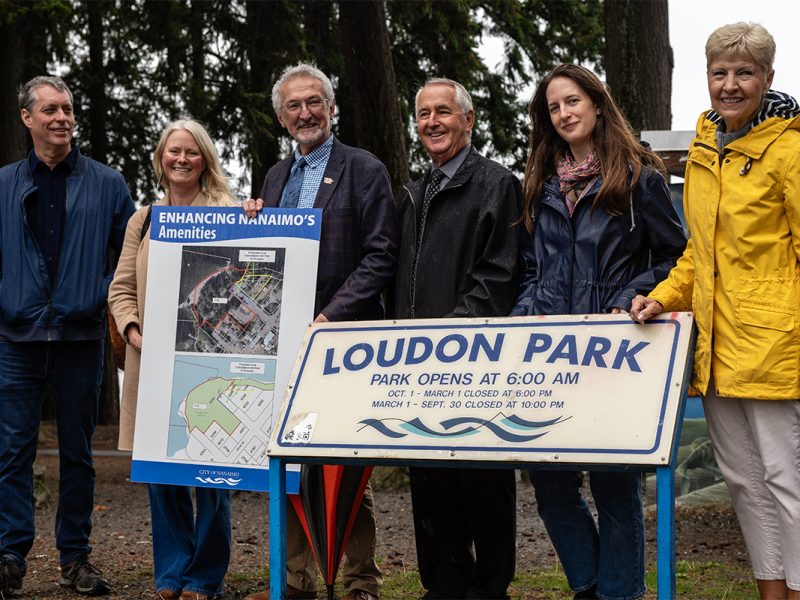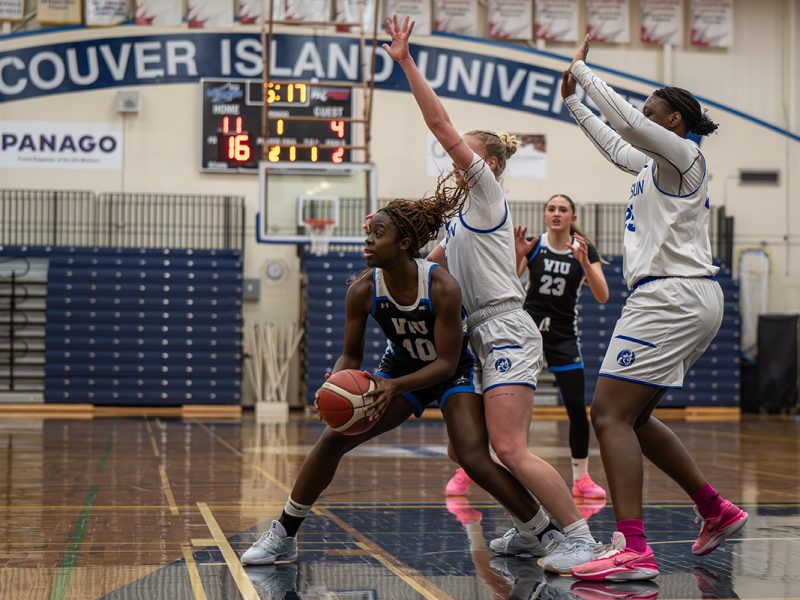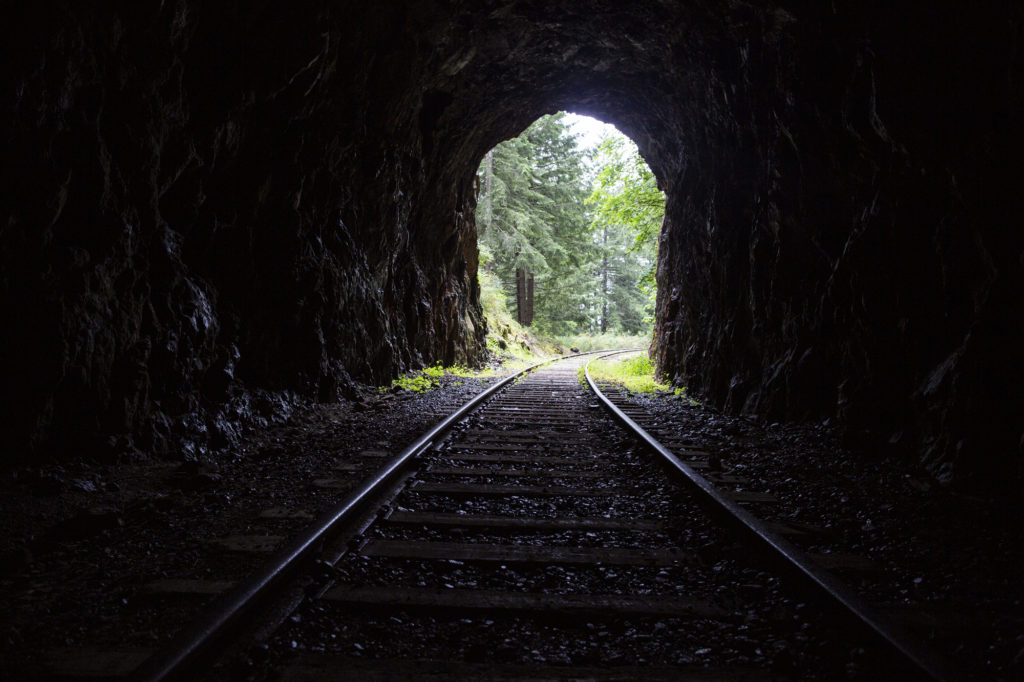
This story is part of a series. Read about the history of the railway here and the business case here.
Al Kutaj is a railroad man. Walking along the Esquimalt and Nanaimo (E&N) Railway corridor north of Ladysmith, he counts wooden rail beams in his head, spending mere seconds to assess each one. As the superintendent of the Southern Railway of Vancouver Island (SVI), it’s Kutaj’s job to know the track intimately.
The wooden beams – called ties – are like the railroad’s rib cage, holding together the ribbons of steel first laid down by settlers through First Nations’ territory more than 130 years ago.
Some, like the yellow cedar tie he probes with his favourite pocket knife, are solid. Others are barely visible, split open by the rocks and gravel bursting up through their rotted cores, or seeming to vanish beneath blankets of moss.

It’s been almost a decade since paying passengers rode the 225 kilometres stretching from Victoria to Courtenay and 64 kilometers west between Parksville and Port Alberni.
Since the day passenger trains stopped running in 2011, there have been repeated promises to bring the service back, and millions of dollars in government-funded studies examining how to make it happen, if at all.
The latest of those studies pegged the cost of reviving it at somewhere between $330 and $730 million – between two and three times higher than previous studies suggested.
In June, a First Nation’s lawsuit seeking to declare the rail line dead was dismissed by the B.C. Supreme Court, though the nation that filed it plans to appeal, according to one of its councillors. In July, the BC Chamber of Commerce recommended that the B.C. provincial government work with the federal government to support the return of the rail line.
At the same time, detractors think there are better alternatives for the rail corridor. And with a provincial election now behind us, its future still remains uncertain.
The promise of passenger rail
Laura Nelson moved to Nanaimo from Abbotsford in 2015 believing that passenger rail would be an option for her and her adult son, Dean. Nelson doesn’t drive, and Dean has a disability that requires appointments in Duncan, the only place she could find a family doctor that could take him as a patient.
But she says her arrival in Nanaimo was a rude awakening. The lack of a train meant she and Dean had to rely on bus service to get to his doctors appointments or visit her brother in Victoria.
“Public transit here is just perfectly awful,” Nelson says. “You will get off your bus and then have to wait 45 minutes for your connection to get anywhere, so you always have to be an hour early.”
She said bus travel times to Victoria, especially when the highway is congested, make the service incredibly frustrating and time consuming.
“I don’t understand why they don’t utilize [the rail line] they have here on the island. People would use it.”


Nelson remembers the 2015 federal election and all of the talk about bringing back island passenger rail, but it never happened.
In 2016, her hopes rose again when the Island Corridor Foundation (which owns the rail line on behalf of the regional districts and First Nations along its length) held a special heritage train ride marking the rail line’s 130th anniversary. Everyone in town started believing that passenger rail was right around the corner, Nelson says. But again, nothing came of it.
Then, in 2018, the Greyhound bus service was cancelled, impacting Nelson and her son even more. It left only two private bus company options for non-drivers like her wishing to travel south.
Proponents of reviving passenger rail say it will kick-start the economies of communities along the line by providing easy, car-free access up and down the island to travellers and tourists.
It could help take cars off the highway and provide a route around the often-treacherous Malahat Summit, a steep, winding section of highway prone to congestion and deadly accidents. Under the most recent proposals, residents as far north as Nanaimo could conceivably commute to work in Victoria and back.
While reporting this story, The Discourse surveyed hundreds of Nanaimo residents for their thoughts about reviving the rail line. Residents were essentially split: the responses ranged from “Bring back that passenger train!” to assertions that “rail is a fantasy, there is no economic model that would make passenger service work on Vancouver Island.”
Like Nelson, many people said that renewed passenger service would be a huge benefit to people who can’t afford to drive cars, while others worried that renewed service would continue to flounder with low ridership like the old service did.
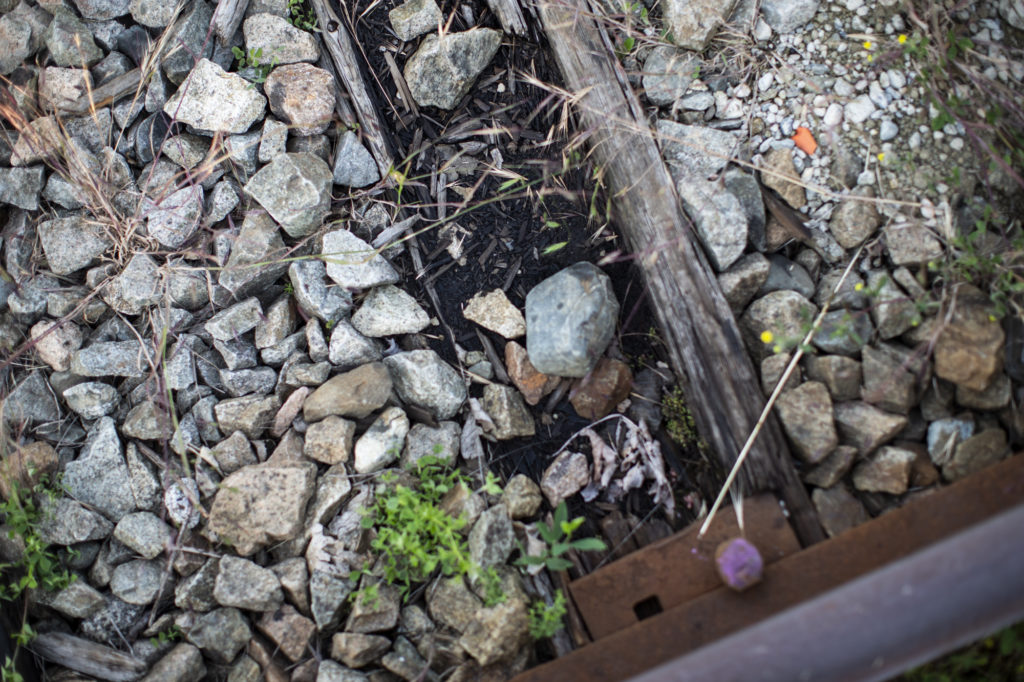

‘Rail ensures accessibility for everyone.’
When VIA Rail suspended passenger service in 2011 over safety concerns with the track, ridership was hovering around 40,000 passengers per year for the once-daily round trip — mostly tourists and other travelers heading up island from Victoria.
Some of the low ridership numbers can be attributed to what many have described as the backwards routing of the passenger train schedule — which left Victoria at 8:30 a.m., arriving in Courtenay by 1 p.m. and returning again to Victoria by nearly 6 p.m.
With that schedule, anyone living north of Victoria would have to catch the afternoon train south, overnight in the city, and take the morning train home — essentially tying up two full days for something as simple as a business lunch in the provincial capital.
Current proposals would solve that problem by reversing the train direction, making it more appealing to mid-island residents. A one-way trip would take between three and five hours, depending on the level of service.
According to Larry Stevenson, CEO of the Island Corridor Foundation (ICF), getting passenger trains running again isn’t just about reducing carbon emissions from cars or about boosting tourism to the mid-Island, (though both are important benefits, he says).

The ICF was launched as a charity in 2004 to take over ownership of the rail line, making the corridor a public asset.
Renewing passenger service, he says, is about allowing people like Nelson the same freedom that’s enjoyed by people who drive cars.
“You get into a whole bunch of stuff that people don’t really talk a lot about … things like social equity which, in my mind, is a big deal,” Stevenson says.
“When you have rail, you start discovering that there’s a whole bunch of people that need it: low income people, elderly people, young people,” he says. “What if you can’t afford $4,000 for a car and auto insurance? Rail ensures accessibility for everyone.”
To determine a potential fare structure, the latest government report compared the existing costs of two similar passenger rail services: Ontario’s GO Train, and the Lower Mainland’s West Coast Express.
Based on ridership fares for those two services, the report estimated that a renewed Vancouver Island passenger rail service would be broken into zones ranging from between $4 and $6 one way for a trip from Langford to Victoria, up to between $21 and $27 for the full trip from Courtenay to Victoria.
What’s on the table now?
In late April, the B.C. government released its latest report assessing the state of the existing track and expected costs to rebuild it. That report pegged the price tag at somewhere between $330 and $730 million, and laid out a phased approach to first renewing, and later expanding, passenger rail service.
Overall, Stevenson says he largely accepts the findings of the report and the cost estimates – with one major caveat: the contingency budgets of around 50 per cent for everything from First Nations consultation to actual construction are too high, he says.
“Doubling the price, I mean, that’s going kind of crazy in my mind,” Stevenson says. “If you require a doubling of the cost to cover contingency, I would suggest you have the wrong people managing the project.”
Using lower contingency budgets and a hybrid of the middle and most expensive options laid out in the April report, Stevenson says passenger service could be restored along the line, including three daily commuter trains near Victoria, for around $300 million.
Detractors say it’s not worth it
For as many vocal supporters as the passenger rail push has attracted, there are equally vocal opponents who say even optimistic ridership estimates of around 1,000 boardings per day simply doesn’t justify the costs.
Greater Nanaimo Chamber of Commerce CEO Kim Smythe disputes assertions that passenger rail will play a major role in downtown revitalization plans.
“I don’t see a business model for it,” Smythe says. “I can’t see investing hundreds and hundreds of millions of dollars because somebody thinks it’s okay to take five hours to ride a train [from Courtenay] when the drive to Victoria is two and a half hours.”

Groups like the Association of Vancouver Island and Coastal Communities (AVICC) and the Regional District of Nanaimo believe that in the absence of rail, improved inter-regional bus service with support from BC Transit could fill in the gaps.
In recent years, a competing organization called the Friends of Rails to Trails Vancouver Island has begun advocating for the tracks to be ripped out altogether and replaced with a cycling and multiuse pathway, like the Galloping Goose trail in Victoria, or the Kettle Valley Rail Trail in the B.C. Interior.
The society’s president Alastair Craighead says the costs to bring back passenger trains are simply too high, and a cycling path would be a better use of the corridor.
“[Rail] was unprofitable probably for the last 50 years,” Craighead says. “That’s the truth because it can’t compete with roads in so many ways.”
He believes based on what it cost to convert the Okanagan’s Kettle Valley Railway into trails, his organization’s Rails to Trails project could be completed for around $90 million. And like that former railway, Craighead says mid-Island communities could see significant tourism traffic from a multiuse pathway.
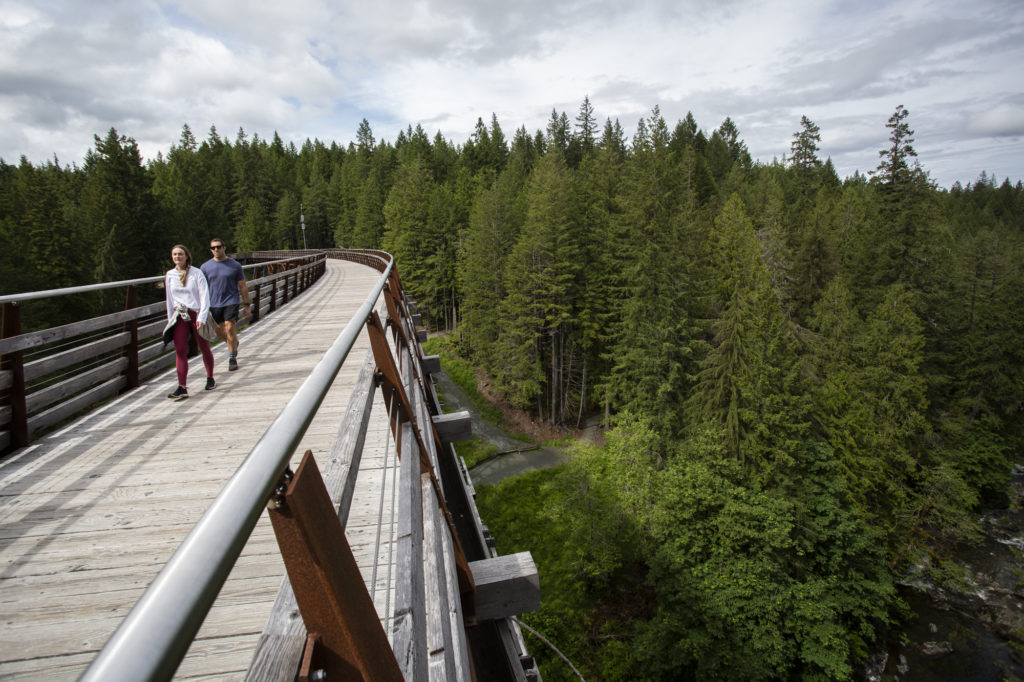
There is one thing that the ICF and the Friends of Rails to Trails agree on: leaving the corridor in limbo risks killing it outright.
“The Island Corridor is completely invaluable,” says Guy Dauncey, an advocate of the Rails to Trails proposal.
“It’s an amazing asset. If it didn’t exist, creating it from scratch would cost billions of dollars and take decades to achieve. And so we really can’t afford to waste it and let it just, you know, return to broom and brambles.”
Stevenson says any more “analysis paralysis” and political foot-dragging could end up choking the rail line more than the encroaching forest. A decision about what to do can’t be put off forever, he says.
‘The legacy of rail is colonialism.’
In July, the B.C. Supreme Court dismissed a five-year-long lawsuit filed by the Snaw-Naw-As First Nation against the ICF and the Attorney General of Canada that sought to declare the rail line dead once and for all, and return the land to its original First Nation owners.
Like other First Nations along the corridor, Snaw-Naw-As had the rail line put through their reserve lands in the early 1900s with little regard for their wishes, and only $650.50 in compensation.
“The legacy of the rail is colonialism and its impact on bringing people to [Vancouver] island,” says Brent Edwards, a councillor with the Snaw-Naw-As First Nation. “It’s no coincidence that the railway for the most part weaves in and out of most First Nations between here and Courtney.”
The Snaw-Naw-As suit alleged “the [right-of-way] through their reserve lands impedes access, restricts development, causes social and economic losses and affects the cultural importance of the land,” according to court documents.
Edwards says for the Snaw-Naw-As in particular, which has one of the smallest reserves in the country, losing access to even 10 acres has serious economic consequences. But the larger questions of who really owns the land and how it should be used are still disputed, he says.
When the ICF was formed in 2003, the goal was to preserve the rail corridor from being broken up and sold off in pieces.
“It contemplated various different uses and relationships for that corridor,” Edwards said. “When you look at the documents, it was never supposed to be about only rail.”
The lawsuit argued that control over the rail line right-of-way should revert to the First Nation because after a decade of disuse it had been effectively abandoned as a railroad.
When the lawsuit was first filed in 2015, it was a contributing factor to the federal government pulling back on funding to repair and upgrade the railroad. In 2016, the Cowichan Tribes and Halalt First Nation filed lawsuits seeking their own land back.
In early 2020, the Snaw-Naw-As First Nation received letters of support for its lawsuit from nine of the 14 ICF member nations all saying they want to see the land returned to reserve status and controlled by the original First Nations owners, says Edwards.
While the Snaw-Naw-As case has been dismissed, the ICF acknowledges the grievance.
“This case highlights the level of frustration among our First Nations partners, and the public at large, for the lack of progress on the return of rail service to the island,” the ICF wrote in a statement.
“This determination should not be mistaken for an invitation to delay progress but as a clarion call to move forward with restoration of rail service,” the statement said.
The Snaw-Naw-As disagree, according to Edwards.
“It’s incumbent upon the [ICF] board of directors to really speak to the fact that there are other uses contemplated for the corridor,” Edwards says.
“How are we going to step up the discussion about those opportunities instead of having this tunnel vision on rail that’s not financially feasible, that’s expensive,” Edwards said.
Political will
At the end of the day, it won’t be more studies or analysis that determine the future of the corridor — it will be up to political will.
Nanaimo Mayor Leonard Krog is a huge fan of reviving passenger rail, as are other mayors along the corridor.
“I have been an enthusiastic supporter of revitalizing Vancouver Island rail for as long as I have memory,” Krog says, pointing to the promise not just of increased passenger service, but renewed freight possibilities and the potential of attracting more cruise ships to Nanaimo’s deep-water port.
“So the rail has significant potential in every respect,” Krog says. “It’s a very important part of our future.”
During the 2017 provincial election, B.C. Premier John Horgan said his party would prioritize re-starting passenger service on the lower sections of the corridor near Victoria and expanding from there.
But a year later, the winds had shifted. Speaking at a Greater Victoria Chamber of Commerce event in March 2018, Horgan seemed to all but kill the idea.
“The business case just doesn’t seem to be there,” he said at the time, according to CTV Vancouver Island, “and I’m not prepared to wait any longer.”
And almost exactly a year after that, the government’s latest cost estimates were released, reviving the decade-long debate yet again.
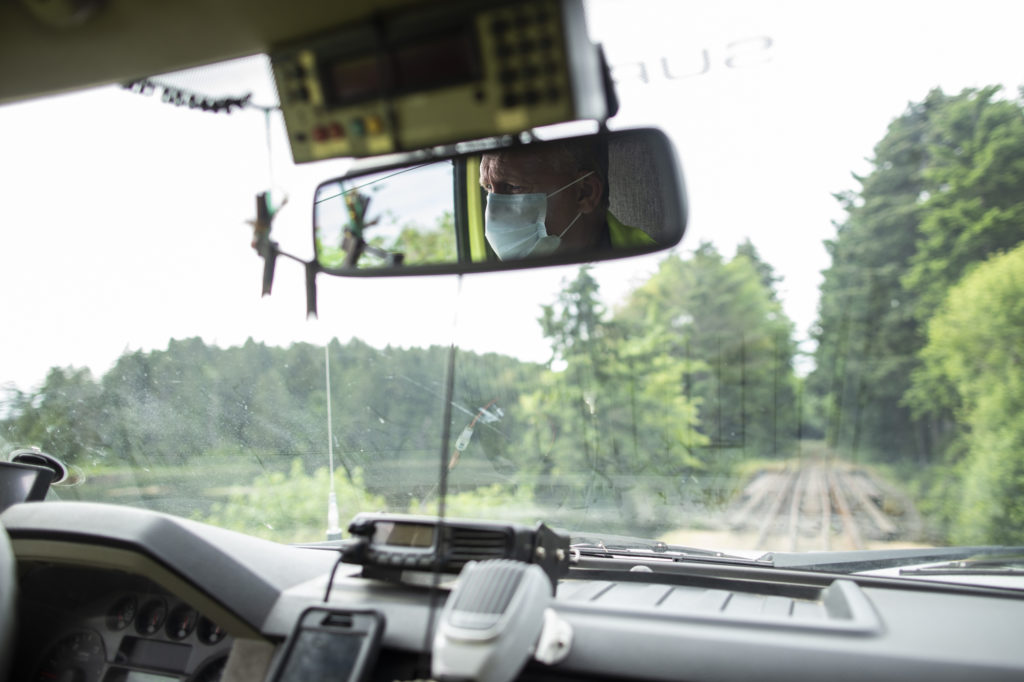
It was the government’s regional transportation plan, however, that was meant to shed light on whether rail was considered an investment worth making. But the province’s awaited South Island Transportation Strategy released in September only says that commuter rail for the capital region should be explored long-term.
“They’ve left everybody north of the Malahat sort of hanging there,” says Tyler Brown, Nanaimo City Councillor and Regional District of Nanaimo director, pointing out that the regional district serves well over 150,000 people.
“The province to date under multiple regimes really isn’t taking inter-community travel on the island very seriously,” says Brown. Whether rail or bus, he says he just wants to see a cohesive plan.
In late September, the ICF sent a letter to the premier questioning why the foundation was not consulted as a stakeholder and why rail has been left out of the strategy.
“With all due respect to the [South Island Transportation Plan] report writers we have been ‘exploring’ the potential for rail for over 15 years,” the letter states. “Meanwhile the corridor continues to deteriorate, our congestion problems are increasing, and we continue to add to our greenhouse gas problems.”
Stevenson says that what’s needed now is action one way or the other and – paradoxically – the COVID-19 pandemic that has crippled tourism economies across the country might provide the perfect opportunity. He believes that rebuilding the rail line could be the perfect stimulus project because construction could begin almost immediately and put people back to work.
Ian Morrison, president of the AVICC agrees that with post-COVID recovery plans underway, “investments in [transportation] will benefit all the folks on Vancouver Island,” he says. “Whether rails, trails, ferries, transit, these are services people need and use.”
But without public funds, there’s no future for the rail corridor either way. [end]
Editor’s Note, Oct. 29, 2020: This story has been updated to reflect the 2020 B.C. provincial election results.
This story was edited by Lauren Kaljur and Lindsay Sample, with additional files from Lauren Kaljur. Photos and videos by Jesse Winter.

